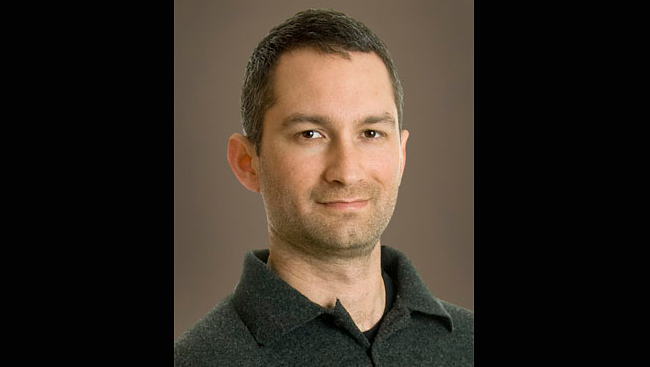Anatol Kreitzer: Unraveling the Secrets of Parkinson's
- Published23 Apr 2012
- Reviewed23 Apr 2012
- Author Jennifer Carr
- Source BrainFacts/SfN
Anatol Kreitzer, PhD, a neuroscientist at the University of California, San Francisco, has spent his career trying to resolve the underlying causes of Parkinson’s disease, a degenerative disease that affects 500,000 people in the United States alone. Here, he discusses the direction of his latest research, and the obstacles he and other scientists still have to overcome to find a potential cure.

What goes wrong in Parkinson's disease?
A major feature of Parkinson's disease is the loss of neurons in the midbrain that produce the chemical dopamine. The major target of these neurons is a region called the striatum, an entry point for a lot of neural connections that pass through. In the case of Parkinson's, dopamine is lost, and aberrant forms of learning occur that cause major motor dysfunction.
What is dopamine, and why is it so important?
Dopamine is a chemical made in brain. Its function is to change the way brain cells communicate. Millions of brain cells communicate with each other on very rapid timescales. Dopamine doesn't participate in that fast neurotransmission, but it changes the way that neurotransmission occurs. In doing so, it has a more general function — tuning brain cell communication. Part of the question is: How exactly are neuromodulators like dopamine and serotonin tuning the system? Again, we're talking a system of millions of interconnected cells, so understanding how you can tune something like that is a huge challenge.
Why haven't researchers figured out how to tackle Parkinson's yet?
The standard current practice is to try to replace the dopamine that is lost as these cells die. Initially, it's very effective, but the problem is that it's a progressive disease. So as more and more dopamine neurons die, larger and larger doses of these drugs are required. These drugs, particularly at higher doses, begin to have very bad side effects. The side effects, such as dyskinesia and compulsive gambling problems, can be just as debilitating as the disease itself.
We can replace dopamine to some extent, and that helps fix the problem, but that doesn't tell us what dopamine is doing. In order to really fix the problem, we need to know what dopamine is doing — how it's having the effects it's having. That's really the role of scientific research.
Tell me about your research.
Initially the treatment goal is to replace dopamine. After that, you try to target the circuitry dopamine is acting on. This is where my research comes in. Can we actually figure out what dopamine is doing, and try to target that instead of dopamine directly? If we can get away from dopamine itself, then it's possible we can get away from some of the side effects I described.
We've looked in cells in the striatum directly to try to figure out the dopamine signaling pathways and how they influence striatal neuron activity, and we've found a couple of interesting things. We've found that there's a molecular pathway that can regulate synaptic plasticity (the strength of the inputs onto those cells), and we've defined some of the key players in there. Those might be molecular targets themselves. We've also defined some changes that happen in the circuitry of the striatum (the way the cells themselves are connected to each other), and that target may also be a novel therapeutic strategy for treating Parkinson's. Lastly, we're looking at the circuitry itself — how we can modulate the activity using new methods, like optogenetics.
What excites you most about your research?
What excites me is the ability to understand how molecular or cellular events can lead to behavior. That goes from normal processes of learning and memory and motor function to abnormal processes that occur in Parkinson's and other movement disorders. How do you understand how these very subtle changes alter the system? For instance, if you lose one chemical, what does that do to the system? Or if you change synaptic plasticity in some way, how does that actually change function?
We are now beginning to have tools to bridge the gaps from our knowledge of cellular function all the way up to neural circuits to behavior, and we're using methods (like optogenetics) that allow us to test these hypotheses and actually test function in behaving animals and ultimately ask how these molecular changes are causing changes in behavior. Now, for the first time, within the last 5 to 10 years the field has developed methods that will lead to a revolution in understanding how brains work.
What advice do you have to young people interested in a career in science?
Think outside the box. You're not always going to find your way forward from where you think. It might be outside your field or outside your comfort zone. This is the reason people always stress collaboration. That's how science moves forward — it's by integrating different ideas and concepts from other areas and synthesizing them to move forward.
CONTENT PROVIDED BY
BrainFacts/SfN
Also In Archives
Trending
Popular articles on BrainFacts.org


















